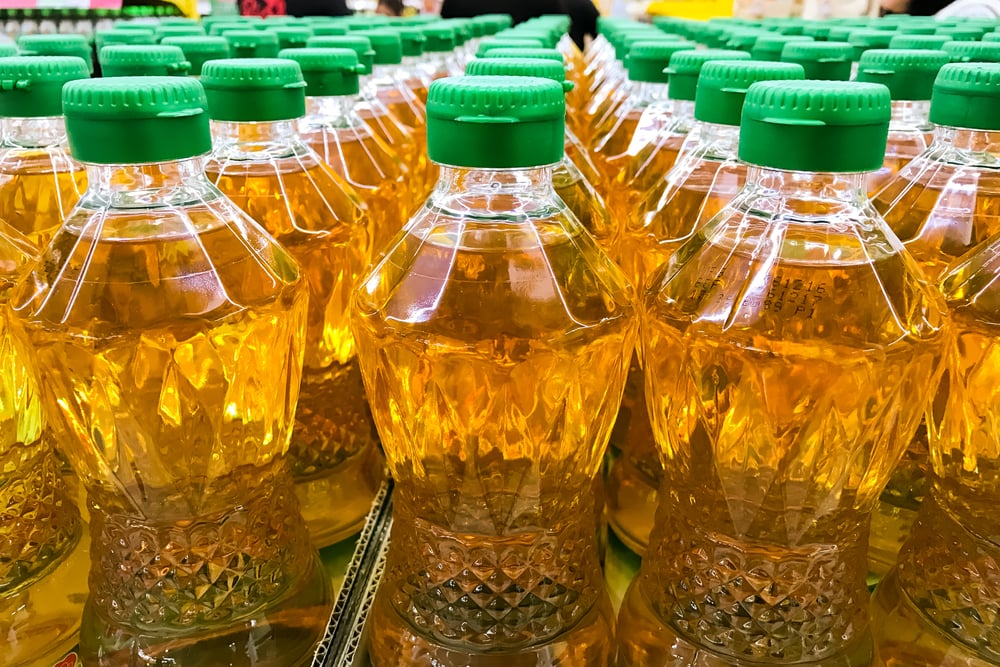Palm oil is known internationally as our most despised crop. It’s low cost, causes controversies anywhere you bring it up, and is pretty much a major reason for deforestation all over the world. It’s hard to find products that palm oil isn’t in — from food and makeup to soap and even ink, palm oil is everywhere.
But despite being boycotted by many activist groups, it is still one of the most used ingredients — over 73 million tons a year, to be precise. Why, you ask? Because of its low price and value — the African oil palm can produce a whopping 10 times more oil than soybeans and other veggie oils can.

What is palm oil?
Palm oil is the edible vegetable oil that comes from oil palm trees and their fruit. This tree produces two kinds of oil: crude palm oil, which is derived from the flesh, and palm kern oil, which is a result of crushing the pit in the middle. However, even though palm oil is in nearly 50% of what we find in grocery stores today, using it is highly problematic and controversial.

The tragic history of palm oil and what the problem with it is
Palm oil has a bad reputation due to its history of colonialism and exploitation. It first entered the economy in the 1500s, on transatlantic slave trade ships, where slaves were forced to survive on it. After Europeans had learned that palm oil could work towards curing bruises or bodily strains, they used it on slaves before sending them to the auction block.
Soon after, in the late 1700s, British businesses were adding it to soap, and in 1807, the Brits abolished the slave tread, leading traders to seek out legal products. Over the following years, Britain cut the tariffs on palm oil, motivating Africa to starts producing it.
By the year 1840, palm oil was cheap enough to replace other ingredients like candles and soap. While it used to be considered a luxury good, it was now extremely common. By adding chemicals they turned it into a bland ingredient that could be used instead of more expensive fats.
In the 1990s, when trans fat was banned, palm oil was used as a cheap alternative that got the job done, and consumers couldn’t even tell the difference. It was used to dye margarine yellow, and helped the product stay firm at room temperature.

What’s happening with palm oil today
Although it’s a staple in so many industries, the EU has decided they are going to phase out the use of palm oil biofuels due to growing concerns about deforestation. Countries like Indonesia, on the other hand, refuse to give up and want to up the palm in their biodiesel.
Although we’re not where we need to be in the fight against palm oil, endangered animals are getting more press and educating people on the fact that almost 200 species are at risk of going extinct in the name of oil palm plantations. This includes African forest elephants, orangutang, and tigers.

Why not switch to another vegetable oil?
If only it was so easy. Some advocates argue that shifting from palm oil can actually make things worse, because other oil crops would require more land to grow these alternative substitutes.
To get similar amounts of palm oil would be quite a feat as it supplies 40% of the globe’s vegetable oil on only 6% of land that produces vegetable oil. Take coconut or sunflower oil, for instance — you would need up to 10 times more land to get the same amount, which would just create more problems in other areas of our globe, threatening different habitats.

The solution
There are sustainable methods of making palm oil, and hopefully, these will gain traction for long-term usage and help save our planet. By using small-scale agroforestry like the techniques used in Africa can be cost-effective, and also help save the environment.
In order for deforestation to stop happening at the current rate due to palm oil’s effect, we need more companies to be transparent in their use and sourcing of the ingredient, set stricter policies to protect ecosystems and human rights, and only use RSPO certified palm oil.
If enough customers take action and stop tolerating this matter, it’ll make a difference. But today, many customers are not willing to pay a premium for sustainable and justly produced products. Until that happens, cheap palm oil and the repercussion on the environment and vulnerable communities will keep happening.
